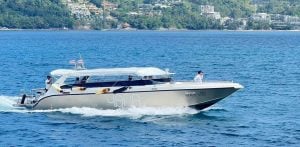Thailand unveils Phuket monorail plan to improve transport

The government unveiled an ambitious plan to enhance Phuket’s transportation infrastructure, featuring a new monorail system linking the airport and Phuket Town. This initiative arises from the island’s robust economic performance, with over 300 billion baht in circulation last year.
Government spokesman Chai Wacharonke announced yesterday that Prime Minister Srettha Thavisin recognised Phuket’s potential, aligning with the government’s strategy to make Thailand a hub for tourism, transportation, and aviation while improving infrastructure along the Andaman coast.
Chai stated that PM Srettha has directed the Transport Ministry to devise immediate, medium-term, and long-term plans to elevate Phuket’s transportation infrastructure. These plans aim to cement Phuket’s status as a leading tourist destination and a crucial gateway in the lower South.
The development plan encompasses improvements in land, sea, air, and rail transportation systems.
For immediate action, the Department of Highways will address traffic issues on Highway 402 by upgrading to smart traffic signals, designating no-parking zones, and closing U-turn points on congested routes.
The medium-term plan focuses on alleviating traffic bottlenecks on Highway 402 and expanding Highway 4027 to four lanes, with construction projected for completion by 2026.
In the long term, the Expressway Authority of Thailand will develop an expressway connecting Patong Beach with Phuket Airport and the intercity expressway system. This expressway is scheduled to open by 2030.
Light rail system
The Mass Rapid Transit Authority of Thailand (MRTA) will conduct a feasibility study on a 41.7-kilometre light rail system linking Phuket International Airport and Ha Yeak Chalong intersection. The study will also examine the region’s geographical conditions to minimise traffic disruptions during construction. The tram system’s construction is expected to start by 2028 and be fully operational by 2031.
A feasibility study on developing Phuket’s deep-sea port has also been conducted, aiming to support the growth of large cruise tourism in the Andaman Sea.
According to Chai, Thailand will be able to earn more revenue from high-spending tourists if they can dock and stay in Thailand for longer periods. The study is expected to be finished by the end of this year.
Additionally, Airports of Thailand have been directed to increase Phuket Airport’s capacity to accommodate up to 18 million passengers annually by 2031, reported Bangkok Post.
Chai mentioned that the development plans also include introducing seaplane services to facilitate travel between nearby islands.
Latest Thailand News
Follow The Thaiger on Google News:


























